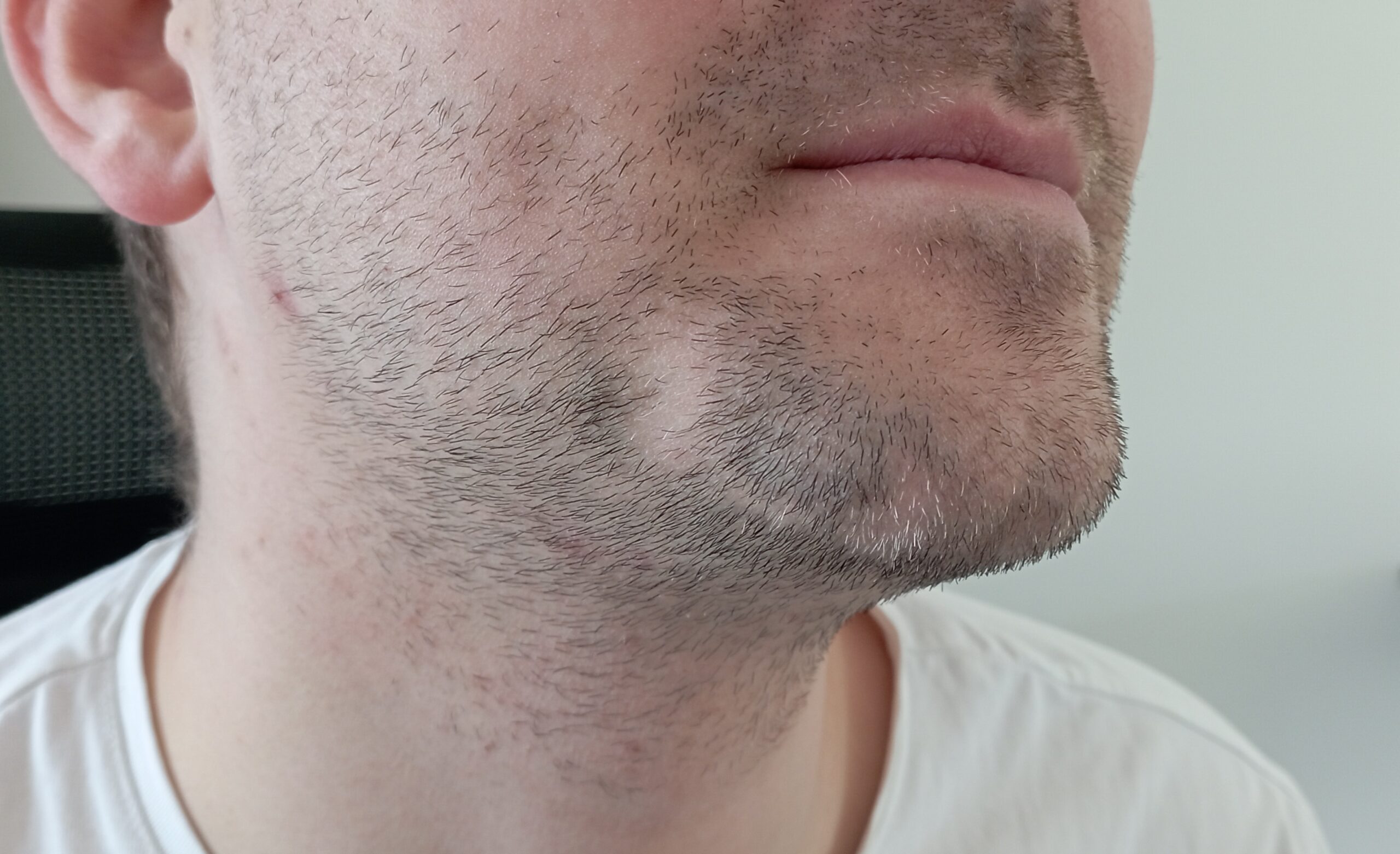
Article content
Did you find bold patches in your beard? Or bald spots on your chin? Most commonly,alopecia areata barbae is a specific form of alopecia areata that occurs in the beard area in men. This autoimmune disorder can lead to patchy beard loss and the formation of bald patches in the beard.
Facts
- This is a form of Alopecia Areata, where the hair falls out in oval-shaped deposits
- This type of alopecia often moves from the beard to the hair, typically within 12 months of occurrence in the beard
- The immune system attacks the hair follicles, inflammation forms and the beard hair subsequently falls out
- This disease occurs in 2% of the male population
What is alopecia areata barbae?
Alopecia areata barbae is a type of alopecia areata, an autoimmune disease where the immune system misjudges the hair follicles as a threat and attacks them, leading to beard hair loss. While alopecia areata can affect any hairy part of the body, alopecia areata barbae mainly affects the beard on the chin, cheeks and neck. This condition can occur in isolation (i.e. only the beard hair falls out) or as part of a wider manifestation of alopecia areata that affects other parts of the body (typically hair, but eyelashes, eyebrows and hair on other parts of the body can also fall out).
What does alopecia areata barbae look like?
It most often occurs in middle-aged men slightly after 30. It typically starts on the neck or on the chin and posterior jaw with the appearance of multiple small bald spots. Occurrence on the cheeks is less common.
The main manifestation of alopecia areata barbae is the sudden appearance of one or more circular, smooth, bald patches in the beard. These bald patches may vary in size and may gradually enlarge or merge, leading to more pronounced beard loss. Some patients experience mild itching or tingling in the affected area. Sometimes even before the beard loss occurs. Unlike other forms of hair loss, alopecia areata barbae does not lead to complete and permanent loss of the beard in most cases. The skin remains smooth without scarring.
What causes alopecia barbae?
The exact cause of this alopecia in the beard, as well as other forms of alopecia areata, remains largely unknown. However, it is thought to be an autoimmune disorder where the body’s immune system mistakenly attacks healthy hair follicles, which it considers to be foreign bodies. This autoimmune reaction disrupts the normal hair growth cycle, leading to hair loss. Unlike the standard form of alopecia areata, alopecia areata barbae does not have a clear genetic predisposition, so it may not have a family history.
Several factors are thought to contribute to the development of alopecia areata, including genetics, environmental triggers and stress. People with a family history of autoimmune disease are at higher risk of developing alopecia areata. Stress, both physical and emotional, has also been identified as a potential trigger for the development or exacerbation of the disease.
Treatment options for alopecia areata in beard
The aim of the treatment of alopecia areata barbae is to suppress the autoimmune reaction causing inflammation and to promote beard regrowth.
The first step in the treatment of lysine in the beard caused by this type of alopecia is the deployment of corticosteroids to suppress the inflammation that causes the hair loss.
The second step is to promote the growth of new hair from inactive hair follicles that have been affected by inflammation. In some cases, I recommend patients Plasmatherapy or mesotherapy but for other cases, treatment is preferable oral or topical minoxidil. The treatment options are many and the correct method depends on the patient’s history and the manifestations of the disease.
As with any hair loss, and in this case beard hair loss, the sooner you address the problem, the easier the treatment and the faster the recovery of bald spots on the chin or cheeks.
The new beard hair that grows on the bald patches is white at first and over time it darkens back to the same shade as the other beard.
Unfortunately, relapses, i.e. relapse of the disease after successful treatment, are common in this disease .
Conclusion
Alopecia in the beard is more than just a cosmetic problem, it is a medical condition that can significantly affect self-esteem and quality of life. With the right treatment, it is possible to achieve beard regrowth.





